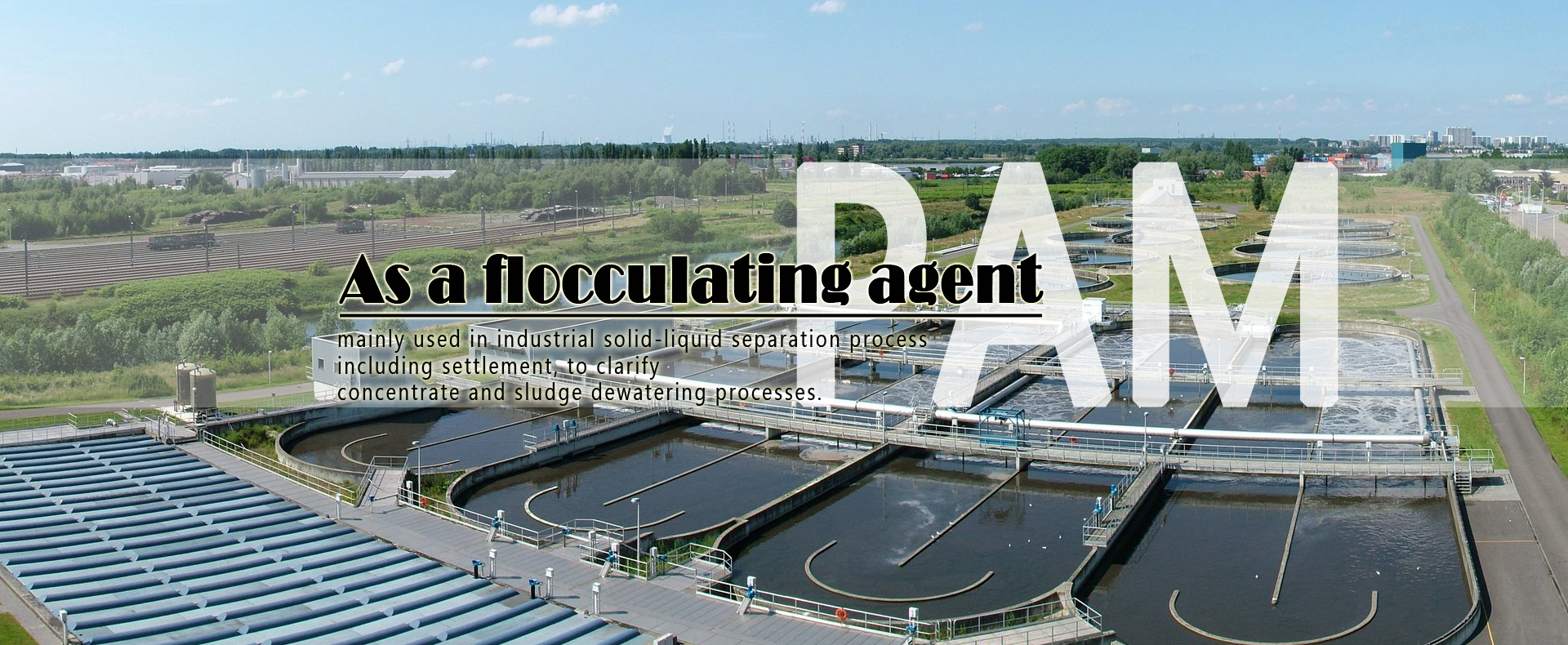The main function of flocculant in sewage treatment is to strengthen the solid-liquid separation of sewage. Flocculant can be used for the primary precipitation in sewage treatment and the secondary precipitation after activated sludge method, and it can also be used for tertiary treatment or advanced treatment of sewage. When using flocculants, you can use coagulant aids to enhance the flocculation effect in sewage treatment
Coagulation treatment is usually used in front of solid-liquid separation equipment. After being combined with solid-liquid separation equipment, it can effectively remove suspended solids and colloidal substances in raw water and reduce effluent turbidity and COD. Coagulation treatment can also effectively remove microorganisms and pathogenic bacteria in water, and can remove emulsified oil, color, heavy metal ions and other pollutants in sewage.
The mechanism of the flocculant
The flocculant is added to the water and then hydrolyzed into a charged colloid and its surrounding ions to form a micelle with a double-layer structure.
In the sewage treatment, the flocculant adopts the method of rapid stirring after administration to promote the hydrolysis of the colloidal impurity particles and the flocculant into the micelles in the water. The impurity particles in the water first lose their stability under the action of the flocculant, and then agglomerate into larger particles, and then settle down or float up in the separation facility.
The process of stirring to prompt the flocculant to rapidly diffuse into the water and to mix with all the sewage is mixing. The impurity particles in the water interact with the flocculant to lose or reduce the stability through mechanisms such as compression of the electric double layer and electric neutralization. The process of generating microflocs is called coagulation. The process of agglomerating and forming microflocs under the agitation of bridging materials and water flow, through adsorption bridging and sediment netting, grows into large flocs, which is called flocculation. The combination of mixing, coagulation and flocculation is called coagulation. The mixing process is generally completed in the mixing tank, and the coagulation and flocculation are carried out in the reaction tank.
Types of flocculants
Flocculant is a type of substance that can reduce or eliminate the precipitation stability and polymerization stability of dispersed particles in water, and make dispersed particles coagulate and flocculate into aggregates for removal. According to chemical composition, flocculants can be divided into three categories: inorganic flocculants, organic flocculants and microbial flocculants.
Inorganic flocculants include aluminum salts, iron salts and their polymers.
Organic flocculants can be divided into anionic, cationic, non-ionic, amphoteric, etc. according to the charge properties of the charged group of polymerized monomers. According to their sources, they can be divided into two categories: synthetic and natural polymer flocculants. .
In practical applications, inorganic flocculants and organic flocculants are often compounded to make inorganic-organic composite flocculants according to their different properties. Microbial flocculant is the product of the combination of modern biology and water treatment technology, and is an important direction of current flocculant research and development and application.
Post time: May-08-2021








